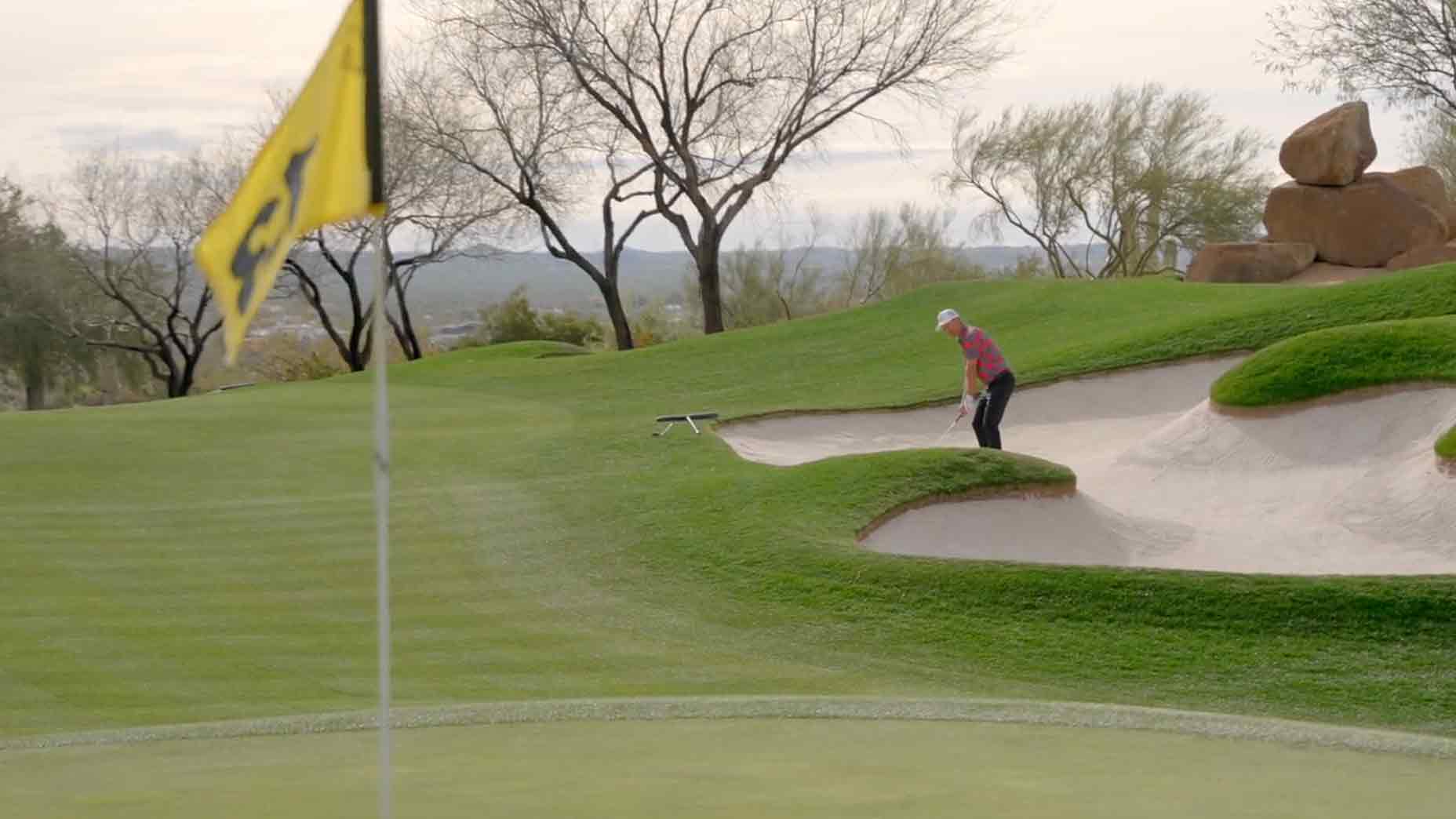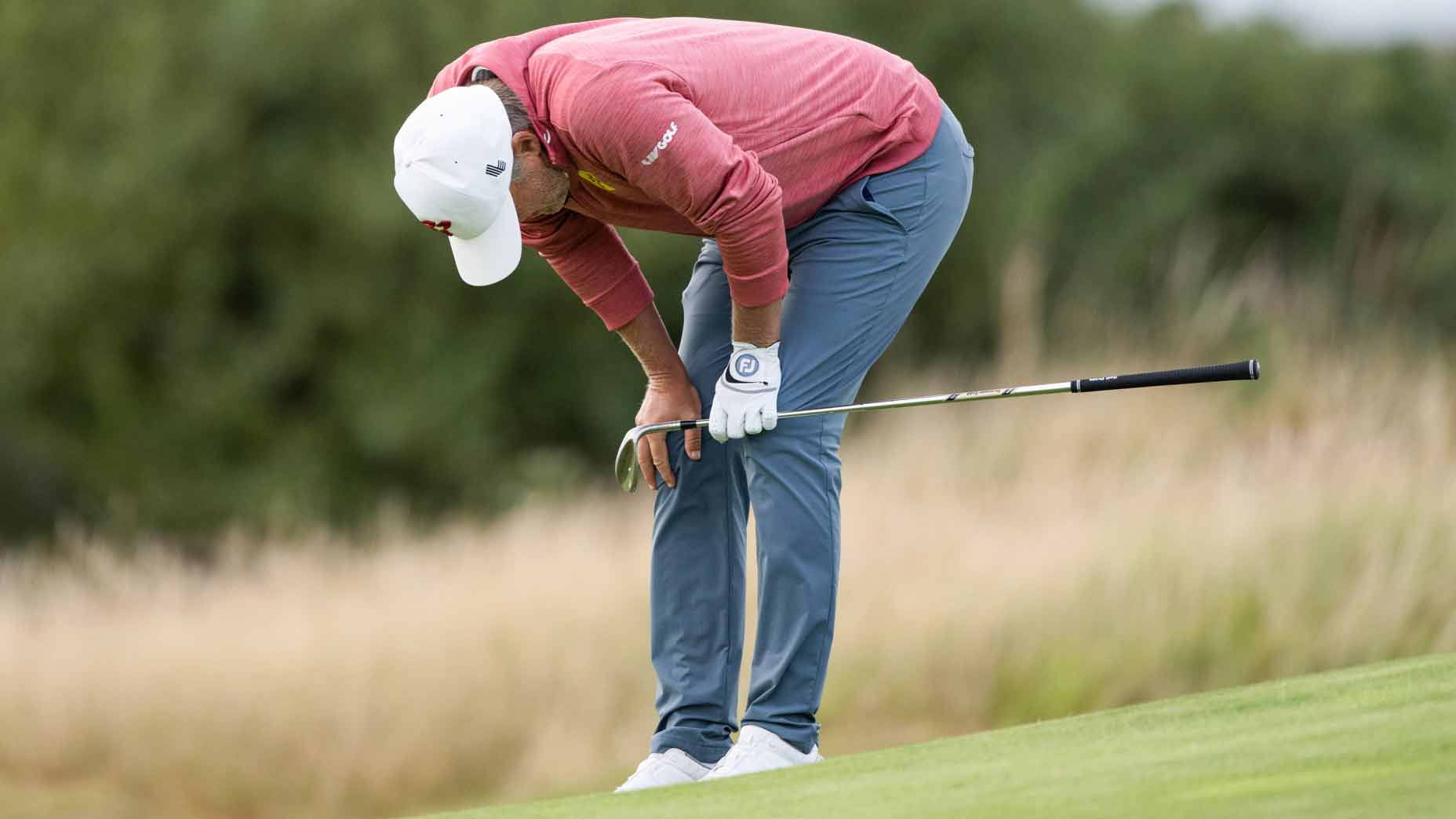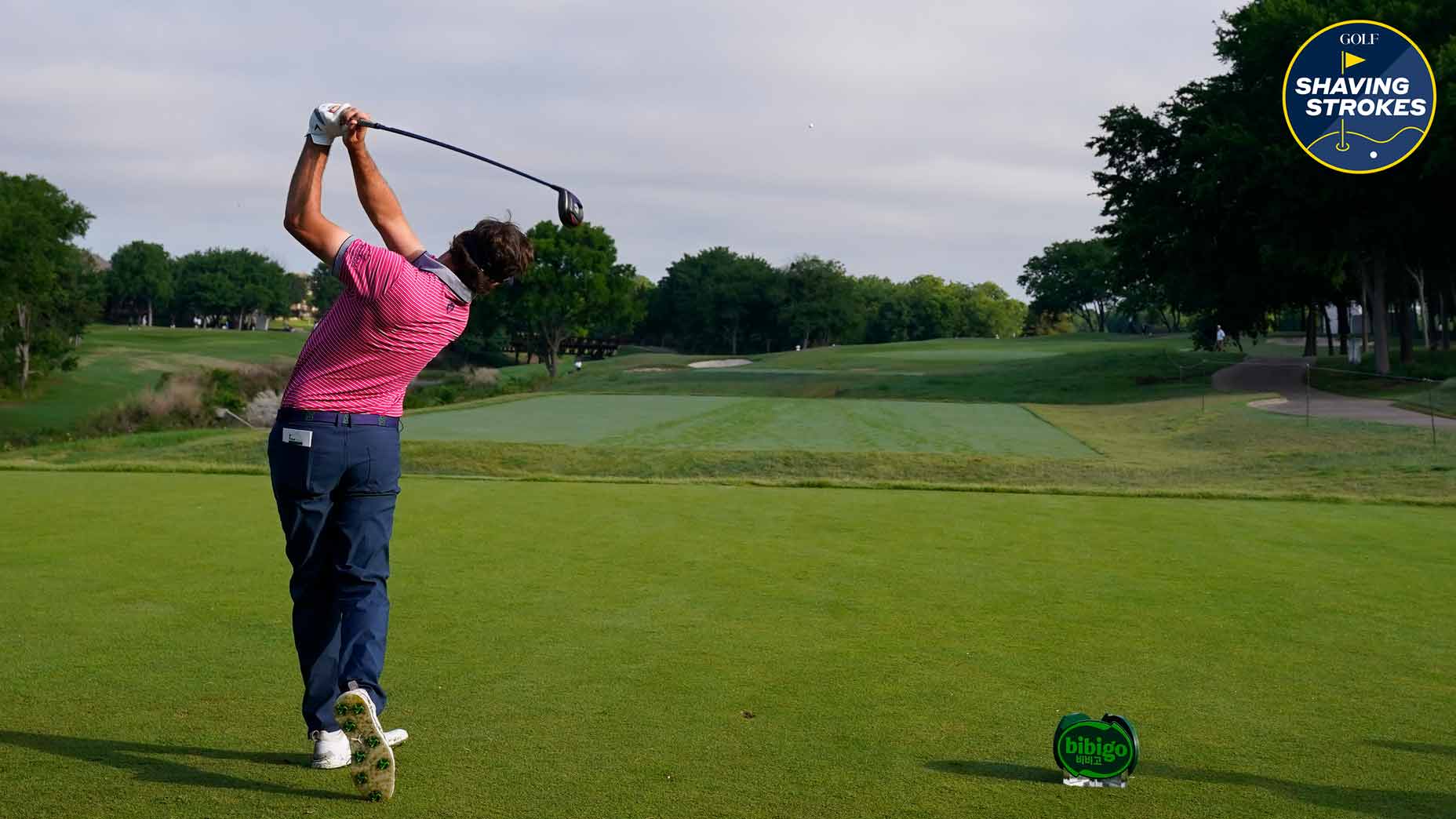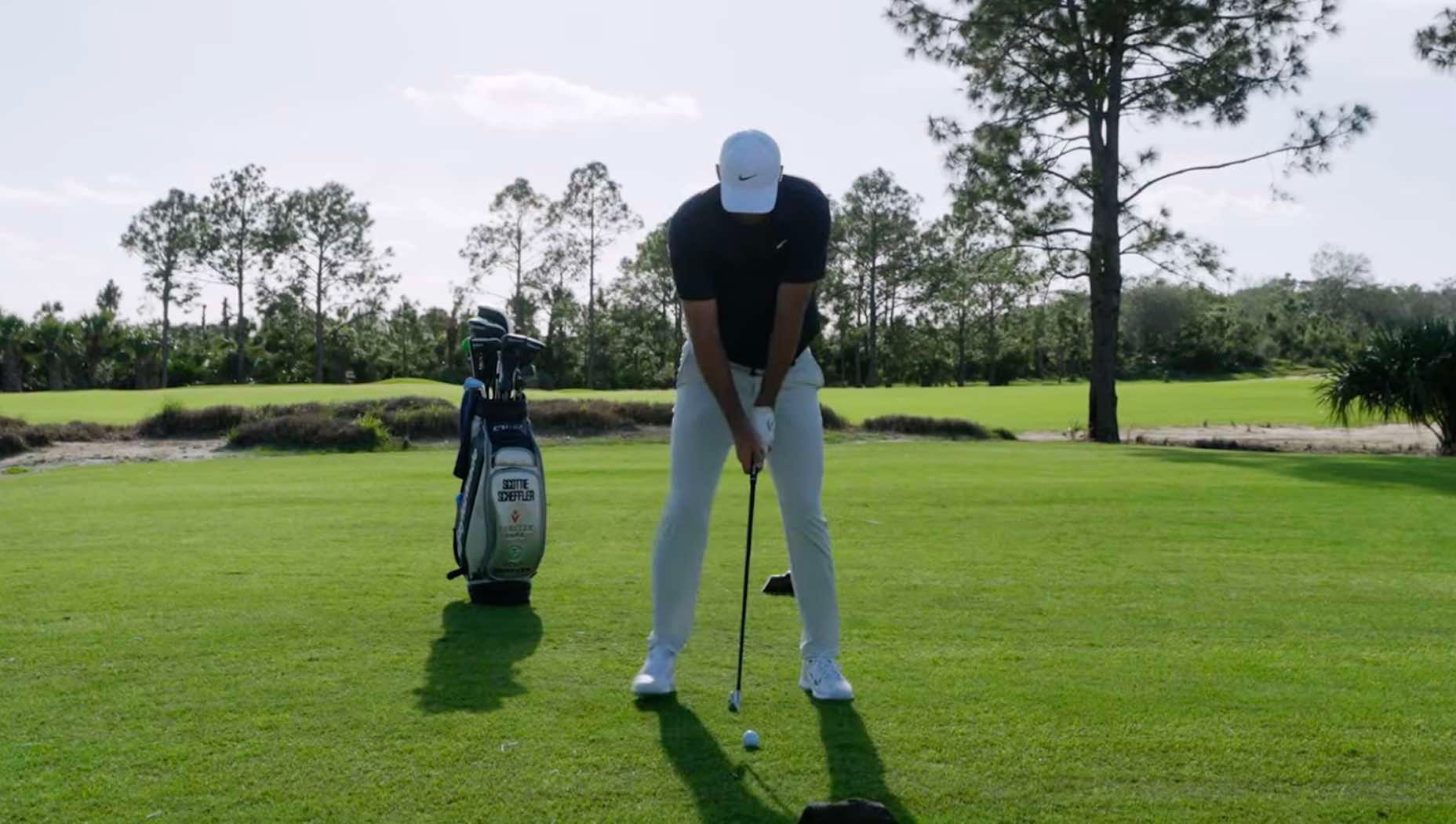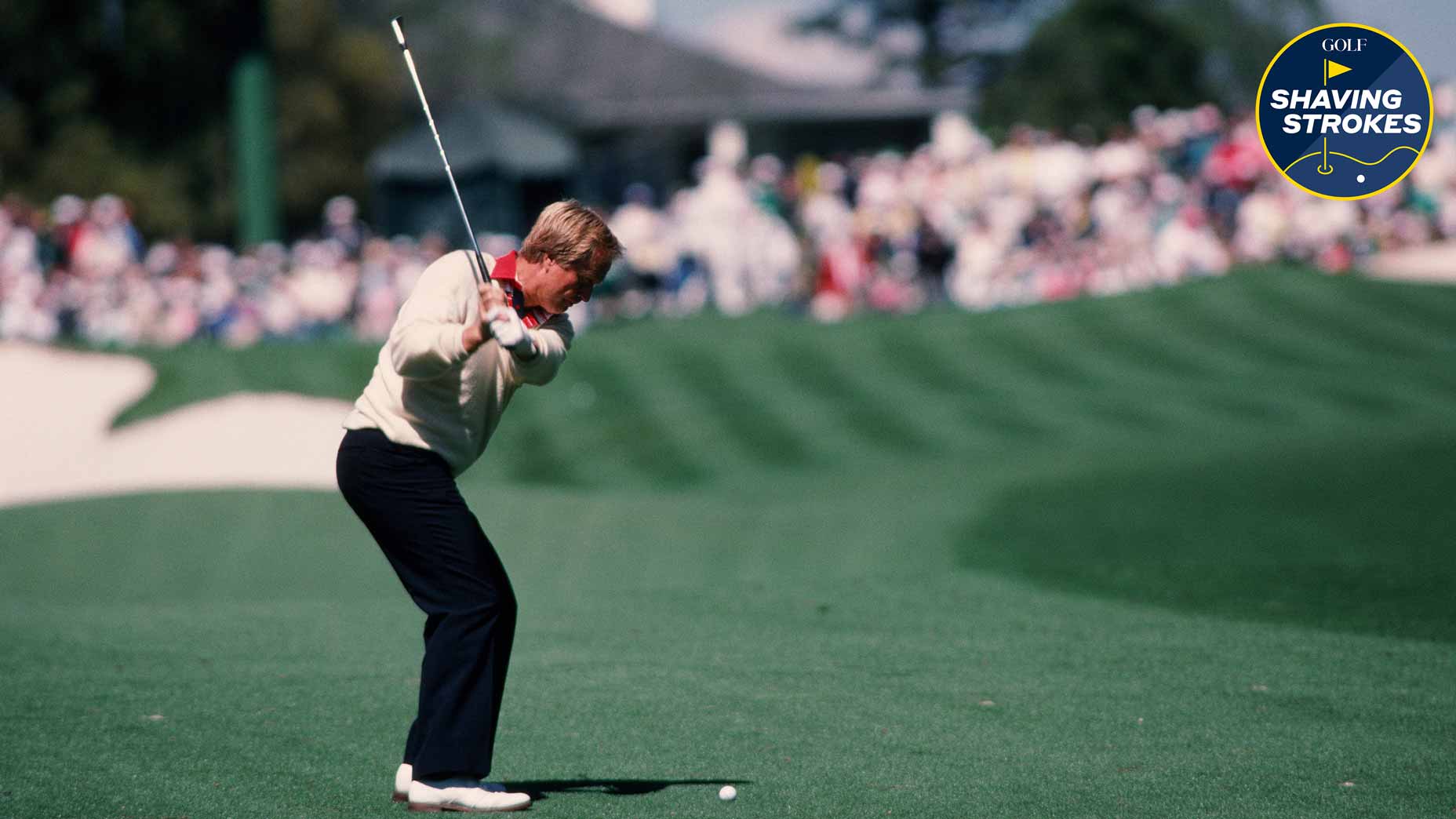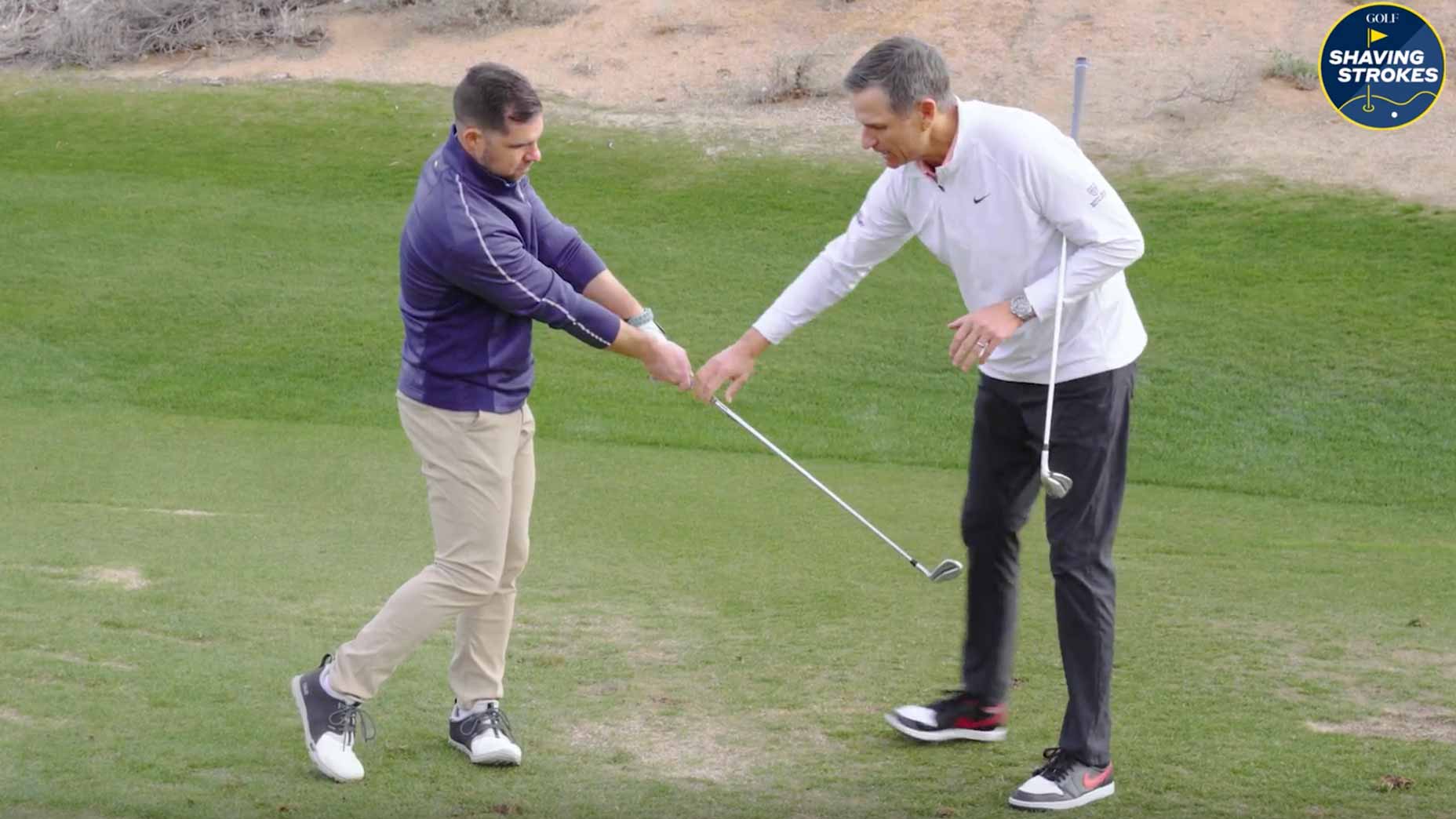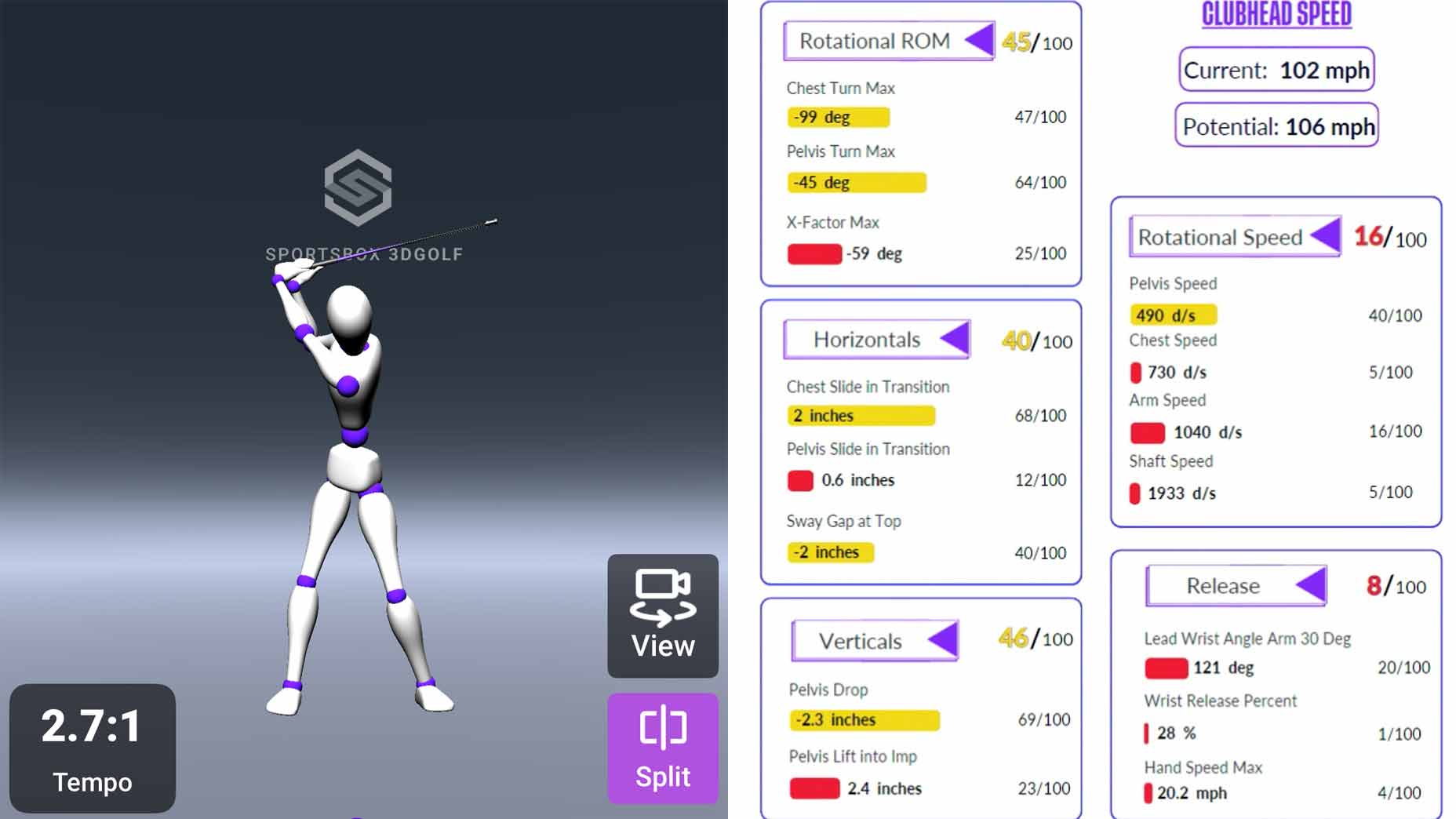Maybe it’s just the 13 handicap in me coming out, but I’ve really struggled with 50-yard wedge shots lately — and many amateurs can probably relate.
For only being half a football field away from the pin, sticking your wedge shot tight isn’t as easy as it seems. That’s because there are so many elements that go into it in order to produce a great shot.
You’ve got to decide on the perfect club, understand what your angle of attack should be, and figure out what swing length to use, all while hoping you can put a little spin on that sucker to have it sit right by the pin.
As every golfer knows, mastering a wedge shot from 50-75 yards can make a huge difference on your scorecard. Instead of bogey golf, now you can give yourself more par and birdie opportunities — music to every players’ ears.
So how do you dominate 50-yard wedge shots? In the video above, Parker McLachlin, aka the Short Game Chef, provides some go-to tips.
How to hit a 50-yard wedge shot with precision
Since not all 50-yard wedge shots are created equally, McLachlin runs through the different club options to consider for this shot.
While he admits that he’d typically use a 60-degree wedge and fly it at about 90%, he uses his 56-degree wedge for this particular shot since he doesn’t have any obstructions around; like a bunker, water or any trees.
Now that he’s landed on the right club choice for this shot, he explains the proper swing length to use in order to control the shot as best as possible.
“What I’m going to do is feel like it’s a 50-percent motion, and I’m going to fly this thing about 80-85 percent of the way there,” he says. “Hopefully I’ll get a couple big bounces, which will let this thing trickle close to the hole.”
Unlike some other wedge shots where he’d put more backspin on the ball, for this shot, he’s actually looking for the opposite — some top spin, which will help it land and roll from the front of the green toward the flag.
“I’m not going to try and put a bunch of spin on this, so my motion is going to be nice and fluid,” he says. “So I’m not going to have any fast acceleration, and I’m going to feel 50 percent, back and through.
“With that 50 percent motion, the clubface is going to be square to just a fraction open. My feet are close together.”
As McLachlin hits his shot, he reminds viewers what he thinks are the most important parts of this 50-degree wedge shot.
“It’s all about managing backswing, managing our speed, and then choosing the right loft [of the club],” he adds. “Figure out what kind of shot you want to hit. On that one, I wanted to let it bounce and roll back towards the hole, so I chose less loft. But if you wanted to fly this to the hole — because there’s something in your way, like a bunker or water — maybe choose a higher-lofted club and fly it closer to the hole.”
So if you’re like me and struggle with either flying the green or coming up just short, follow these tips from McLachlin to start hitting pro-level wedge shots. More opportunities to go low should soon follow.
Use GOLF15 for 15% off a Short Game Chef membership! Click here to join.



